Callaloo, a dish of wild amaranth or other greens, is a great example of how Jamaican food is much more than jerk chicken, curried goat and ackee (although I like those too).
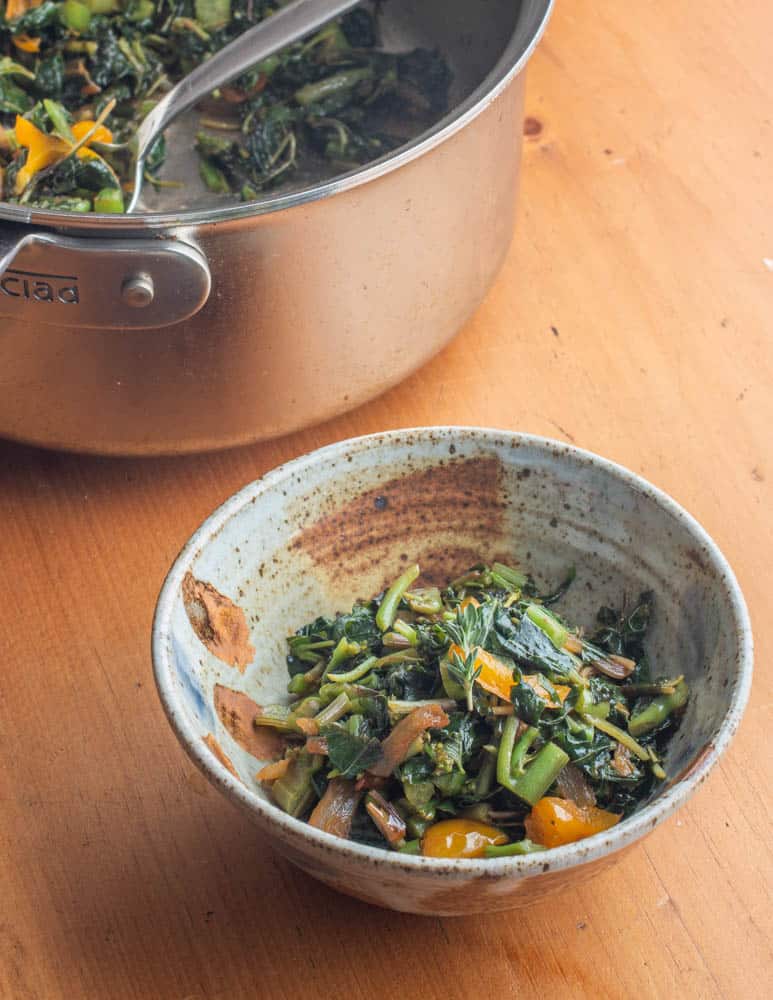
I used to date a woman from Jamaica, and, after enjoying a certain herb grown in the region, she'd get cravings for Jamaican foods (her friend's jerk chicken was the best I've had).
Along with jerk chicken, ackee and saltfish, she mentioned callaloo, so I made a mental note to try it sometime. As often happens when I'm looking at traditional dishes, finding the "true" callaloo recipe wasn't as simple as looking at a few variations of a dish to try-the more I looked at it, the more I was fascinated at what seemed to be infinite variations of a dish of plants from the Caribbean.
I'm not an expert on Jamaican and Caribbean food by any means, but I think you'll find some of the things I've noticed following the breadcrumb trail interesting. If you make the dish, or have family or friends who do, please leave a comment or (better yet) share your version.
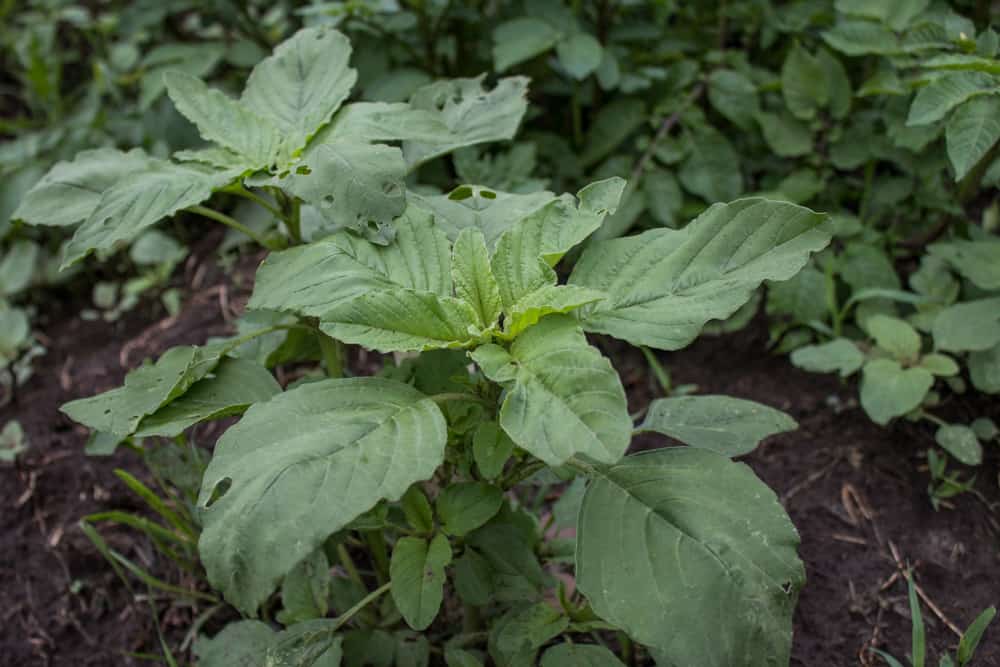
Callaloo seems to have a lot of permutations: sometimes a soup, sometimes a bowl of cooked greens, sometimes thick and pureed like Indian saag (also traditionally made with amaranth) sometimes with fish (typically salt cod), sometimes not. The variations seem a natural progression similar to other traditional dishes that are widely enjoyed around the world in that everyone's grandma probably has a certain way of making it.
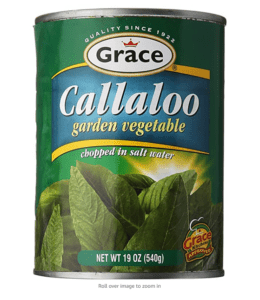
Callaloo is sold in cans for export. The most common showing leaves of amaranth on the can. The name callaloo refers both to a plant, and the finished dish.
However it's made, callaloo is going to be a green dish with leafy greens as the foundation, and depending on the location and preferences, seems to be made with one of three different plants: dasheen (taro) leaves, amaranth, or a plant called xanthosoma.
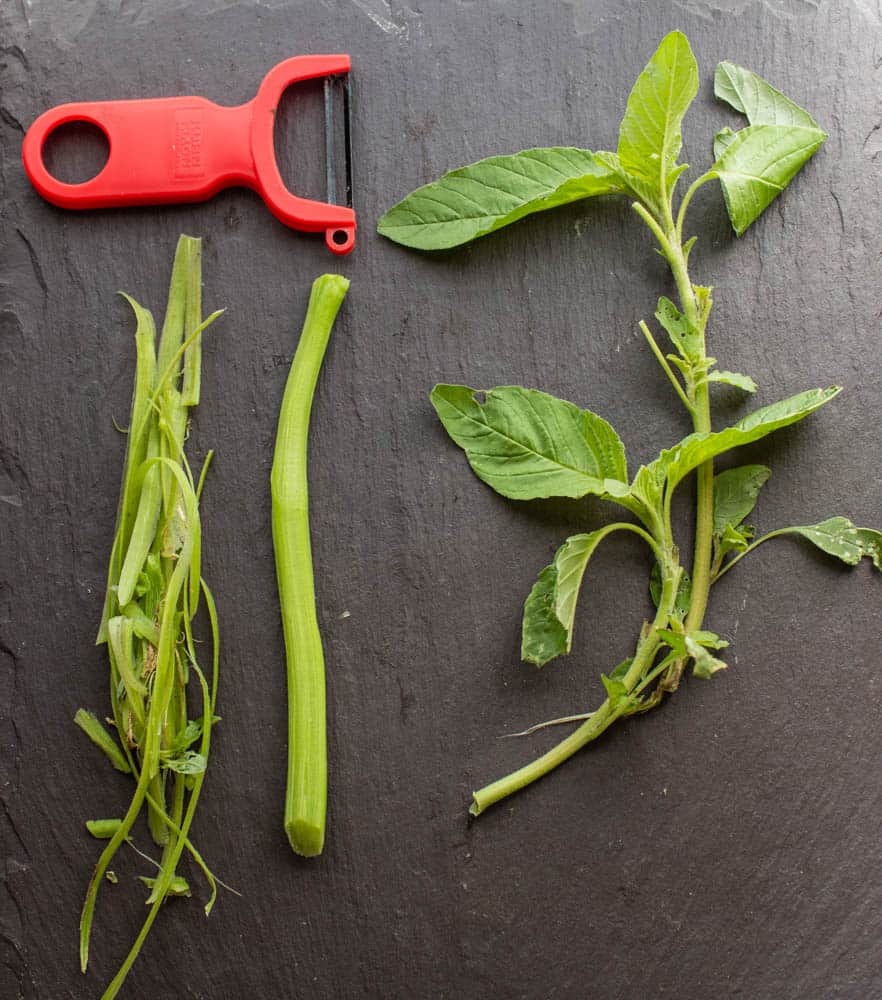
Like a few other very popular traditional foods, the name callaloo itself may refer both to the plant used to make the dish, as well as the finished dish itself. That linguistic "double-use" is something I see regularly with cultures around the world, mostly with dishes made from plants. Hindbeh, the Lebanese dish of dandelions and caramelized onions (so good!) is another example, as is borscht.
With so many variations of the dish, I didn't know where to start. "Does it contain okra?" "Is it a soup?" "Is it pureed?" "Does it contain saltfish?". From what I can see, all of the aforementioned can be true depending where you are, although the Trinidadian Callaloo seems to be more commonly made with tarro leaves and served as a soup, but again, I'm speculating, and undoubtedly there's some localized versions I haven't read about yet.

Just like with foraging, having someone familiar with a traditional food show you first-hand how it's made is one of the best ways to learn. I don't know anyone from the Caribbean here in the Midwest, but, as luck would have it, while I was in Texas last month speaking at the Mother Earth News Fair an Uber driver tipped me off to a Jamaican restaurant owned by a chef from Jamaica. I looked at the menu, saw callaloo, and knew I had to make time to try it.
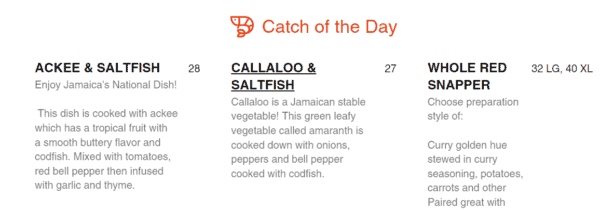
The restaurant was, interesting. I was greeted by a DJ at the door who crooned on a microphone that he'd be singing to enhance my "upscale dining experience" (insert nervous laugh-cringe). Salivating over jerk chicken, curry goat, and Jamaican-style whole lobster, I suppressed my meat cravings and ordered the callaloo with saltfish. My server asked me twice to make sure I knew what it was.
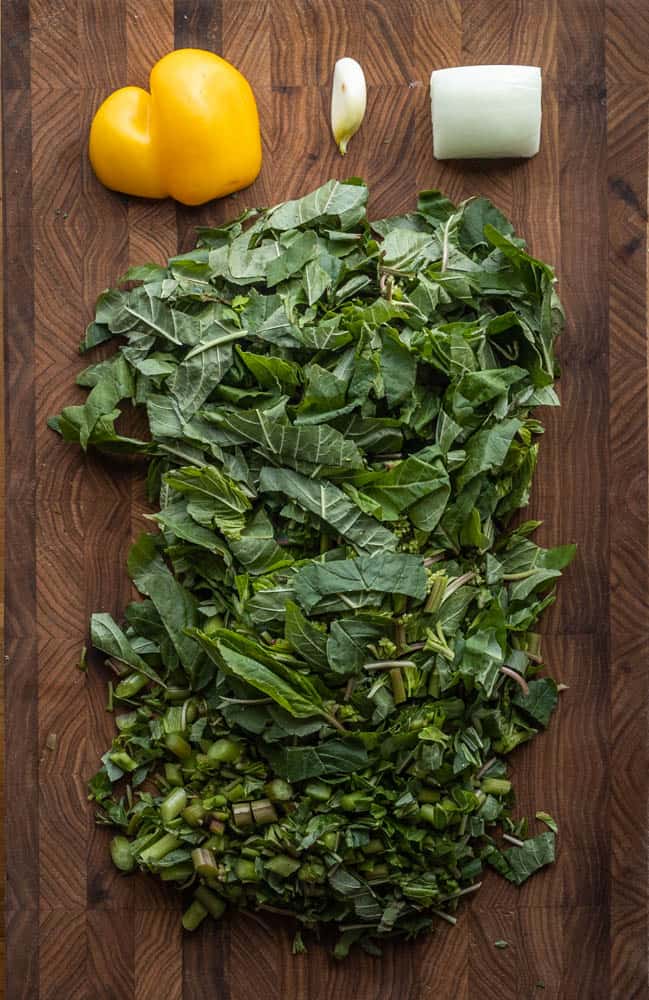
The callaloo came to the table a large entrée plate of greens punctuated with flecks of saltfish, and, at 27$, I was hoping for the best. I have to be honest though, it wasn't my favorite. It was about 10 ounces of cooked greens absolutely swimming in slightly spicy oil-by far the oiliest, heaviest plate of greens I've ever had (probably the line cook getting happy with the oil). As a side dish it would have been fine, but paying 27$ to get a taste of a bowl of cooked greens, was, a bit much.

I was full after a few bites, but after scrying through the contents of the plate I could see somethings that helped me understand the technique. There were whole allspice berries and stems of fresh thyme, and a little bit of peppers and onions I assumed were cooked in the oil first to build flavor, something the chef confirmed when he stopped by after I asked about how I could make it at home.
When I got back from the trip the first thing I wanted to do was make a bowl for myself, so I followed chef's directions, omitting the salt fish and going light on the oil. It's a great variation on your typical bowl of greens. I get amaranth (it's labeled as red spinach or Chinese spinach) when it's out of season at my local Asian grocer, and I recommend searching it out specifically for this as the large amount of tender stems is part of what makes it so good. Common amaranth / Amaranthus retroflexus, will make an even better version.
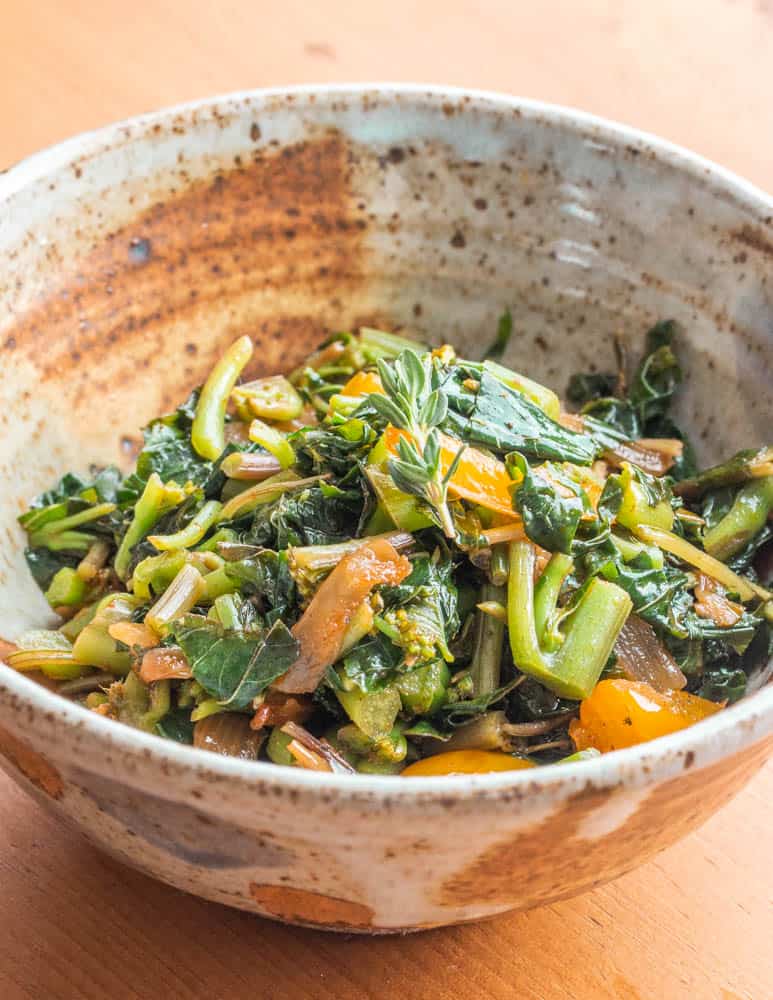
More Traditional Greens Recipes
Lebanese Dandelions with Caramelized Onions (Hindbeh)
Amaranth Callaloo
Ingredients
- 8 oz amaranth look for plants with lots of thick, tender stems
- 1 oz yellow onion, thinly sliced
- 1 oz bell pepper, any color but green, sliced
- 1 large clove garlic (5 g) finely chopped
- Pinch Crushed red pepper flakes to taste
- 2 Tablespoons flavorless cooking oil
- 1 teaspoon chopped fresh thyme
- 4 large allspice berries use the largest you can find as you’ll be picking them out
- Kosher salt, to taste
- ½ teaspoon paprika (optional, this is mostly cosmetic to mimic the color of the chili oil the chef used)
Instructions
- Wash and dry the amaranth, then cut into ½ inch slices. If your stems are thicker than a pencil, slice them ¼ inch. Some species or more mature plants may need to have their stems peeled to not be fibrous after cooking.
- Over medium heat, warm the oil in a pot with high sides and a lid (a dutch oven or similar works good) add the paprika, allspice berries and cook for a minute or two.
- Add the garlic, crushed red pepper and cook for a minute more, then add the peppers and onions, along with the thyme and a pinch of salt, and cook for 3-4 minutes or until translucent.
- Add the sliced amaranth, along with ¼ cup of water, bring the mixture to a simmer on medium-high heat, cover, turn the heat to medium-low and cook, stirring occasionally, until the amaranth is tender and tastes good to you, which should take about 15-20 minutes (or longer) depending on your greens. Fish out the allspice and discard, or leave it in and eat around the berries.
- When the amaranth is tender, remove the lid and increase the heat to evaporate most of the excess liquid, then double check the seasoning for salt and heat (it should be mildly spicy) adjust as needed, and serve. It’s great with a piece of flaky white fish and lemon wedges on the side.

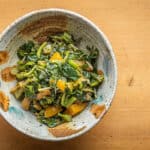
Joan Moore
Cooking Amaranth/Callaloo .... Sorry, I forgot to include one essential item in my list of ingredients for my callaloo/amaranth dish .... the Scotch Bonnet Pepper. It is a must. Not too much now. Just enough to give your taste buds a zing.
Joan Moore
I am Jamaican and I love callaloo/green amarant. I follow my grandmother's simple recipe . . Ingredients are cleaned and chopped amaranth, onion, green onion, garlic, diced tomatoes, coconut or vegetable oil, salt and black pepper. In our recipe, all spice, thyme and paprika have never been added. On occasion we have included boiled, flaked salt cod. It's a simple, delicious side dish served as breakfast or over rice for lunch or dinner. Go light on the oil. Enjoy!!
Alan Bergo
Hey thanks so much for sharing Joan. Recently I got to make this recipe for a job interview with a woman from Jamaica who now owns a resort in the BVI I’ll be cooking at. Out of everything I made, I found it interesting the callaloo was what she liked the most. Basically got me the job. Definitely agree on the oil, the recipe the chef made I based this off of was very oily.
Joan Moore
You are welcome. One item I forgot to mention was Scotch Bonnet Peppers .... It is essential. But go light, any can't take the heat. Many blessings on your culinary journey🙏
Alan Bergo
Thanks Joan.
Tanya Marquette
Nice article. Love learning about the use of callalloo. Yes, it grows 'wild' in my garden. In fact right now it is a solid blanket over 1/4 of my garden and harvested a large bucket for dinner tonite. It freezes well, raw or cooked. I found a frozen bag of saag the other day and just finished it for lunch with a bit of rice. Can't recall all that I did but used the obligatory onion, garlic and hot pepper. Probably some thyme which Jamaicans like to use. And maybe some bone broth for added liquid for the saag. Young leaves cook quickly with the stems very thin. They can get quite thick as the plant grows--up to 4-5 ft. I prefer eating before such growth as they get a bit tougher but will provide oodles of fiber. Will save this article and maybe use it tonite. Thanx
Sarah
Chef Alan, I'm enjoying your recipes and came across this one. I hail from Trinidad where the flavour profile is significantly different. We use coconut milk, okra and amaranth, blend the mixture together and serve over rice (usually accompanied by stewed chicken. https://cookingwithria.com/2011/10/trinidad-callaloo/ if you're interested in a different take....
Alan Bergo
Sarah! Thanks so much for sharing, and especially including a link. I know there's a lot of variations with Callaloo, but I didn't want to write about any I haven't tried first hand. I'll give the pureed version a shot this year. I love the addition of coconut milk and okra.
Salvador
By chance, I planted some amaranto at Home. I was wondering how to eat it, I tried this recipe with my wife and we both agree that is realy good. 5 stars
Alan Bergo
I love amaranth greens. Glad it worked for you.
Marie-Christine Gaud
On his first Summer with us, our foreman Joseph from Jamaica came back from the garden he was going to weed with a big armful of pigweed, with a big smile on his face,,shouting: callaloo! from the top of his lungs. We had our first taste of this hearty vegetable right then for lunch and ever since. It has become our favorite green that has supplanted anything else during the season. Nobody is weeding any pigweed on our farm. The guys even take bundles of it to market where it make people from the islands, and other from Africa very happy. The Aftican people told us they call it lingua lingua.
Alan Bergo
Great story Marie. Thanks for sharing.
Bob Kolasa (Forager Dr BobJ
How much paprika? For color, heat, smokiness? I am always adding some to my greens.
We had red amaranth vigorously volunteering and reseeding in our garden for several years but didn’t know to do this with it.Thanks!
Alan Bergo
Thanks. 1/2 teaspoon. It's cosmetic, to approximate the red chili oil the chef cooked with.
David Britton
So ... Alan ... Pigweed or Lamb's Quarters? My conception of Pigweed is, coarse-fibrous and hairy-spikey, doubling down on"fiberglass". Preference would be L.Qs, where leaves are smaller in proportion to juicier, smooth stems that are covered in whitish bloom that creates a bluish hue on the plant. Blue, hot soup? -- I don't think so, but Hey! Why not?
Alan Bergo
Hi David. You could make something similar with lambsquarters, but I wouldn't call it callaloo publicly. It might not seem a big thing, but, to people who know this dish it would be tantamount to someone making apple pie with zucchini and claiming it's a traditional American dish. Amaranth does need to be well cooked, and some of the A. retroflexus I've cooked in the past I did find necessary to peel the stems, but it's worth it. You could sure make a version of it with lambsquarters though, and it will taste fine, it's just not traditional.
Janis
I can confirm that the Trinidadian Callaloo is served as a soup, at least where I ate it. And it was divine. I've wondered what it was made of. The taste (in my mind, it's been a few years) was more like a puree of spinach soup flavored with nutmeg. It could have been allspice. Yum! Thanks!
Caribbean sailor
Very important!
If using actual fresh Caribbean Calalloo, if you are not blending it you need to cook it very very well!
It looks a lot like spinach. But is very fibrous. Ask any Caribbean local and they will tell you that eating undercooked calalloo is like eating fibreglass.
Alan Bergo
Absolutely, that's why I make sure to put in the method "cook until it's tender and tastes good to you". Also peeling the stems helps. The dish I had in the restaurant had plenty of stem fibers I didn't eat.